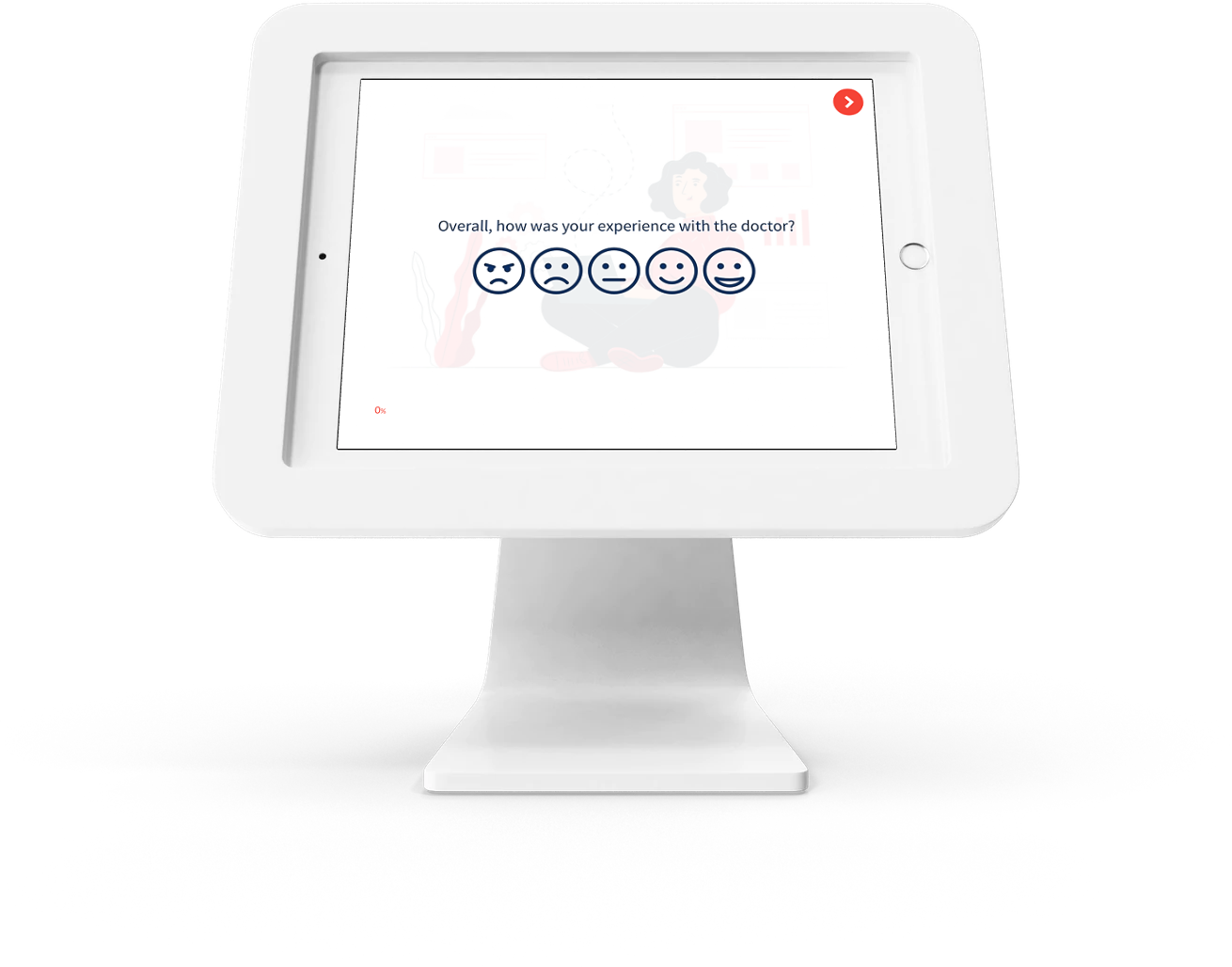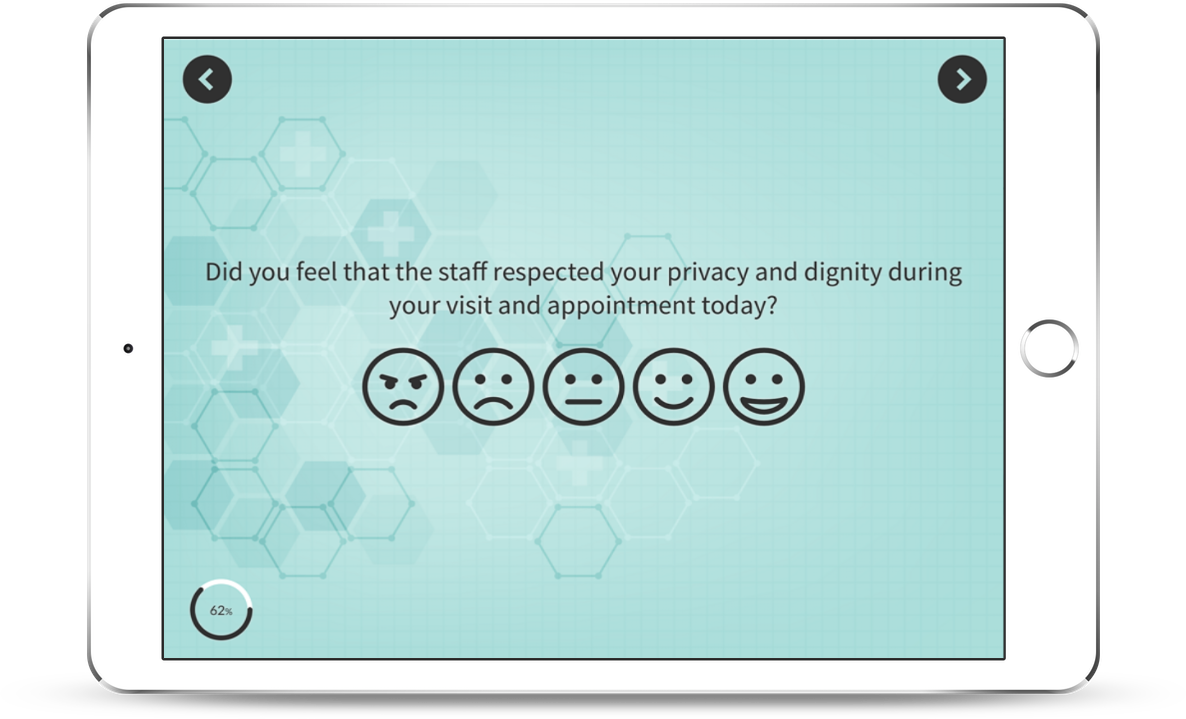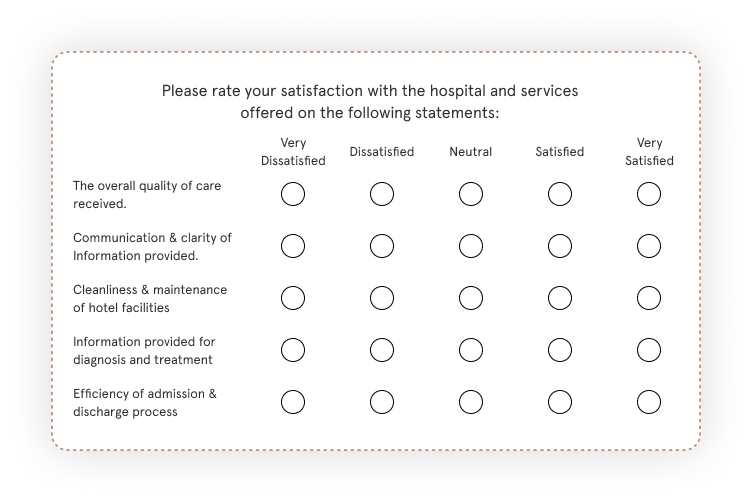The Voice of the Patient (VoP) is rapidly becoming a cornerstone of quality care in the healthcare industry. At its core, VoP encompasses the diverse opinions, preferences, and experiences of patients, providing valuable insights that can drive improvements in healthcare services. A recent study by the Journal of Patient Experience revealed that healthcare facilities implementing structured VoP programs experienced a 20% increase in patient satisfaction scores. This underscores the critical role of patient feedback in enhancing the overall quality of care.
Understanding and prioritizing the Voice of the Patient is essential for healthcare providers. It not only helps in identifying areas needing improvement but also fosters a patient-centric culture that enhances trust and loyalty. VoP initiatives lead to better health outcomes and improved patient experiences, which are pivotal in today’s competitive healthcare environment.
In this blog, we will explore the true meaning and importance of the Voice of the Patient in healthcare. We'll cover practical strategies for implementing VoP in different healthcare settings, and discuss how technology can be leveraged to gather and analyze patient feedback. Join us to discover how listening to the Voice of the Patient can revolutionize healthcare delivery.
TL;DR
-
The Voice of the Patient (VoP) encompasses patient feedback on their healthcare experiences, driving improvements in service quality and patient satisfaction.
-
Implementing VoP is crucial for understanding patient needs, improving care quality, building trust, attracting new patients, and enhancing the reputation in the industry.
-
VoP can be implemented in various healthcare settings, including hospitals, clinics, pharmacies, and aged care facilities, by capturing feedback at different touchpoints throughout the patient journey.
-
Leveraging technology, such as AI-powered analytics and seamless integration with existing systems, is essential for comprehensive feedback management.
-
Zonka Feedback is an effective VoP tool that offers advanced features to listen to the voice of the customers, and analyze and act on their feedback to improve patient experiences. It also provides a 14-day free trial.
What is the Voice of the Patient?
The Voice of the Patient (VoP) refers to the comprehensive collection and analysis of patients' experiences, preferences, and feedback regarding their healthcare journey. This includes all aspects of the patient experience, from clinical outcomes to communication with healthcare providers and overall satisfaction with the healthcare system.
VoP involves gathering patient input through various methods such as patient satisfaction surveys, interviews, and patient advisory councils. It is essential for putting patients at the center of healthcare decision-making. By systematically listening to patients, you can identify areas needing improvement and make changes to enhance patient care. This patient-centered approach helps build stronger relationships, improve care outcomes, and create a more positive healthcare experience.
Importance of Voice of Patient in Healthcare
The Voice of the Patient (VoP) is crucial for healthcare providers to understand and improve patient experiences. By actively listening to patients, you can enhance care quality, build trust, and strengthen your reputation. Here are key reasons why VoP is important:
-
Understanding Patient Experiences: Listening to the voice of the patients helps identify patient needs, wants, expectations, and issues they face. By understanding these aspects, you can tailor your healthcare services to offer more personalized and effective care, ultimately improving patient satisfaction and outcomes.
-
Improving the Quality of Care: Listening to patient voice highlights specific areas that need improvement, from operational inefficiencies to communication gaps. By addressing these issues, you can enhance the quality of care you deliver, ensuring it meets or exceeds patient expectations.
-
Building Trust and Loyalty: When patients feel their feedback is valued and acted upon, it fosters a sense of trust and loyalty. This strong patient-provider relationship encourages most patients to continue using your services and recommend them to others, building a loyal patient base.
-
Attracting New Patients: Positive word-of-mouth and online reviews from satisfied patients are powerful tools for attracting new patients. By consistently improving patient satisfaction through VoP initiatives, you can enhance your reputation and draw in new patients, contributing to business growth.
-
Enhancing Industry Reputation: Maintaining high patient satisfaction and receiving positive reviews helps improve your healthcare institution’s reputation. A strong reputation not only attracts new patients but also helps avoid legal penalties and mitigates risks that could harm your standing in the industry.
Implementing Voice of Patient in Healthcare
1. Choosing an Effective VoP Tool
Selecting the right VoP tool is essential for successful implementation. An effective tool should provide comprehensive features that facilitate real-time feedback collection, multi-channel capabilities, and advanced analytics. Zonka Feedback, for example, offers a robust platform with numerous features designed to optimize the voice of the patient process. When choosing a VoP tool, consider the following core features:
-
Customizable Surveys: Ability to tailor surveys to fit specific needs and patient interactions.
-
Real-Time Feedback Collection: Immediate capture and access to patient feedback as it is provided.
-
Multi-Channel Capabilities: Options to collect feedback and listen to patients' voices via email, SMS, in-app surveys, website forms, and on-site kiosks.
-
Advanced Analytics: Tools for sentiment analysis, text analysis, and detailed reporting.
-
Multi-Location Management: Ability to manage and analyze feedback from multiple locations or branches.
-
Real-Time Alerts: Instant notifications for critical feedback that requires immediate attention.
2. Creating Effective VoP Surveys
Designing surveys that are logical and conversational is key to obtaining valuable insights from patients. Effective surveys should use dynamic survey logic, including features like skip logic and question branching, to ensure questions are relevant to the respondent's previous answers. This makes the survey feel more personalized and engaging, leading to higher response rates and more accurate data. Here are some best practices for creating effective VoP surveys:
-
Keep Surveys Concise: Shorter surveys are more likely to be completed.
-
Use Clear and Simple Language: Avoid medical jargon to ensure patients understand the questions.
-
Incorporate Open-Ended Questions: Allow patients to provide detailed feedback in their own words.
-
Use a Mix of Question Types: Combine multiple-choice, rating scales, and open-ended questions to gather comprehensive feedback.
-
Make Surveys Dynamic: Use features like skip logic and question branching to tailor the survey based on previous responses, making it more relevant to each respondent.
-
Test Your Surveys: Pilot your surveys with a small group of patients to identify any issues and make necessary adjustments.
-
Personalize Surveys: Address patients by their names and reference their recent interactions to make the survey feel more relevant.
-
Offer Anonymity: Ensure patients can provide feedback anonymously if they prefer, to encourage honest and open responses.
By following these best practices, you can create effective VoP surveys that provide valuable insights to improve patient care and satisfaction.
3. Collecting Feedback through multiple channels
To capture a comprehensive view of patient experiences, it’s important to collect feedback through various channels. Utilizing multiple channels ensures that you reach patients where they are most comfortable and willing to provide feedback. Different channels are effective at various touchpoints in the patient journey. Here are some effective channels and their respective touchpoints:

-
Email Surveys: Send follow-up emails after appointments or procedures to solicit detailed feedback on the patient experience. Ideal for post-discharge surveys and routine follow-ups.
-
SMS Surveys: Quick and convenient, SMS surveys are perfect for immediate patient voices and opinions, such as after a patient has checked out from an appointment or received a service. Useful for capturing real-time impressions.
-
In-App Surveys: Integrate surveys into your healthcare app for real-time feedback. This is particularly useful for ongoing patient interactions, such as during telehealth appointments or when patients are using health management tools within the app.
-
Website Forms: Collect feedback directly from your website, ideal for capturing insights from patients scheduling appointments online, using patient portals, or seeking information about services.
-
On-Site Kiosks: Place kiosks in waiting areas, reception, or discharge areas for instant feedback. This is useful for capturing immediate reactions to the visit experience and gauging satisfaction before the patient leaves the facility.

By strategically using these channels at the appropriate touchpoints, you can gather comprehensive feedback that provides a holistic view of the patient experience, helping to improve care and patient satisfaction.
4. Analyzing Feedback
Advanced analysis of patient feedback is crucial for uncovering actionable insights. Leveraging tools with AI-powered features like sentiment analysis and text analysis helps in understanding patient emotions and identifying common themes. Analytics capabilities should allow for in-depth analysis, including multi-locational feedback, helping you pinpoint specific areas for improvement across different branches or locations of your healthcare institution. Key features of analysis include:
-
Sentiment Analysis: Understand the overall sentiment of patient feedback by determining if the comments are positive, negative, or neutral. This helps in measuring patient satisfaction levels and identifying areas that require immediate attention.
-
Text Analysis: Identify recurring themes and specific issues mentioned by patients by analyzing open-ended responses. This helps in uncovering common pain points and areas for improvement.
-
Location-Based Analysis: Compare feedback across different locations to identify trends and disparities. This feature allows you to see which branches or departments are performing well and which need improvement.
-
Trend Analysis: Track changes in patient feedback over time to identify trends and measure the impact of implemented changes. This helps in understanding long-term patient satisfaction and areas that show persistent issues.
-
Demographic Analysis: Analyze feedback based on patient demographics such as age, gender, or treatment type to understand how different groups perceive your services. This helps in tailoring improvements to specific patient groups.
-
Real-Time Reporting: Access real-time reports and dashboards that provide a comprehensive view of patient feedback. This feature allows you to quickly identify and address urgent issues.
By utilizing these advanced features, you can gain deep insights into the voice of patients, enabling you to make informed decisions and continuously improve the quality of care.
5. Taking Action on Feedback
The ultimate goal of listening to the voice of the patient is to make informed improvements to healthcare services. Implement changes based on feedback, and ensure you close the feedback loop by informing patients of the actions taken in response to their input. This not only improves services but also builds trust and shows patients that their opinions matter. Here’s how you can effectively take action on feedback
-
Prioritize Issues: Focus on the most critical feedback areas first and also keep a watch on patient reported outcomes. Identify the most pressing concerns that significantly impact patient satisfaction and address them promptly.
-
Implement Changes: Make necessary adjustments to processes, policies, and services. Use the insights gained from patient feedback to drive meaningful improvements in your healthcare delivery.
-
Communicate with Patients: Let patients know how their feedback has led to improvements. This step is crucial in closing the feedback loop and demonstrating that you value their input. Informing patients about the changes made shows transparency and builds trust.
-
Monitor and Review: Continuously monitor the impact of the changes and review feedback regularly to ensure ongoing improvement. Keep track of how the implemented changes affect patient satisfaction and make further adjustments as needed.
-
Close the Feedback Loop: Engage with patients to confirm that their concerns have been addressed. Follow up with patients who provided feedback to thank them and explain the actions taken. This reinforces the value of their input and encourages continued engagement.
By following these steps, you can effectively implement VoP in your healthcare institution, enhancing patient satisfaction, improving care quality, and building a strong reputation. Ensuring that you close the feedback loop is essential for maintaining a patient-centric approach and demonstrating a commitment to continuous improvement.
Implementing VoP in Different Healthcare Settings through the Patient Journey
Implementing the Voice of the Patient (VoP) effectively across different healthcare settings involves capturing feedback at various touchpoints throughout the patient journey. Each healthcare institution has unique touchpoints, and using the right channels at each touchpoint is crucial for comprehensive feedback collection and listening to the patient voices. Here’s how you can implement VoP in hospitals, clinics, aged care facilities, and pharmacies:
Implementing VoP in Hospitals or Clinics
Hospitals and clinics have a diverse range of touchpoints where patient feedback can be collected to enhance the overall experience. From appointment booking to post-discharge, each interaction offers an opportunity to gather valuable insights. Here are the different touchpoints to collect feedback from inpatients and outpatients.
For Outpatients
Outpatients are patients who visit the hospital or clinic for diagnosis or treatment but do not stay overnight. Gathering feedback at various stages of their visit helps improve the overall outpatient experience.
-
Appointment Booking: Collect feedback through website forms or email surveys to understand the ease of booking and the overall experience.
-
Waiting Area or Reception: Use on-site kiosks or in-app surveys to gather immediate feedback about wait times, staff interactions, and the environment.
-
Post Consultation: Send SMS or email surveys to capture feedback on the consultation experience with the doctors and providers, including the communication and treatment explanations. This also helps you assess the doctor-patient relationship and its affects on the patient experience.
 For Inpatients
For Inpatients
Inpatients are patients who are admitted to the hospital and stay overnight or for an extended period for treatment or surgery. Feedback from inpatients provides insights into various aspects of their stay, helping to enhance the quality of care.
-
Admission: Use on-site kiosks or in-app surveys during the admission process to understand the efficiency and clarity of the admission procedures.
-
During the Treatment and Stay: Collect real-time feedback rare disease patients and other inpatients through in-app surveys or on-site kiosks about the treatment and stay including aspects room comfort, staff interactions, and overall care.
-
Post-Medical Tests: Use SMS or email surveys to gather feedback on the patient’s experience with medical tests, including the ease of scheduling and the professionalism of the staff.
-
Pharmacy: Collect feedback through in-app surveys or SMS about the ease of obtaining prescribed medications and the clarity of instructions.
-
Food and Cafeteria: Use on-site kiosks or in-app surveys to understand patient satisfaction with the quality and variety of food provided.
-
Visitor Experience: Gather feedback from visitors through on-site kiosks or website forms about their experience in the facility.
-
Billing and Payment: Send email or SMS surveys to capture feedback on the billing process, including clarity of charges and payment options.
-
Post-discharge: Use email or SMS surveys to understand the patient’s overall experience and any follow-up needs after discharge.
 Implementing VoP in Aged Care
Implementing VoP in Aged Care
Aged care facilities have unique needs and touchpoints where patient and family feedback is essential. From admission to daily care activities and discharge, gathering feedback and listening to patient voice helps improve the quality of life for residents.
-
Admission: Use on-site kiosks or in-app surveys to collect feedback during the admission process to understand its efficiency and the communication provided.
-
Facility Stay and Daily Care Activities: Collect ongoing feedback through in-app surveys or on-site kiosks about the quality of care, daily activities, and overall satisfaction.
-
Health Assessment: Use SMS or email surveys to gather feedback on the thoroughness and professionalism of health assessments. You can also use health survey questions to track the health condition of the patients.
-
Visitor Experience: Collect feedback from visitors through on-site kiosks or website forms about their experience and interactions with staff.
-
Discharge: Use email or SMS surveys to capture feedback on the discharge process and any follow-up care instructions provided.
Implementing VoP in Pharmacies
Pharmacies interact with patients at various critical points, from fulfilling prescriptions to providing consultations. Collecting feedback at these touchpoints helps in enhancing the patient experience and ensuring effective medication management.
-
Prescription Fulfilment: Use SMS or in-app surveys to gather feedback on the ease and efficiency of prescription fulfillment.
-
Medication Consultation: Collect feedback through email or in-app surveys about the clarity and helpfulness of medication consultations provided by pharmacists.
-
Purchase of Medicines: Use on-site kiosks or in-app surveys to understand the experience of purchasing over-the-counter medications.
-
Billing and Payment: Send email or SMS surveys to capture feedback on the billing process, including clarity and convenience.
Leveraging Technology in VoP
Leveraging technology in the implementation of the Voice of the Patient (VoP) enhances the efficiency, accuracy, and overall effectiveness of feedback collection and analysis. By utilizing advanced tools and platforms, healthcare providers can gain deeper insights and make more informed decisions to improve patient care.
1. VoP Tools and Experience Management Platforms -
Your VoP tool should offer a range of features designed to optimize the feedback process and derive actionable insights. These tools leverage AI and advanced analytics to provide comprehensive feedback analysis. Advanced analytical features include:
-
Skip Logic: Dynamically adjusts the survey flow based on respondents' answers, ensuring relevance and increasing completion rates.
-
Sentiment Analysis: Automatically evaluates the sentiment of open-ended responses, helping to understand patient emotions and overall satisfaction.
-
Text Analysis: Identifies recurring themes and specific issues in open-ended feedback, providing deeper insights into patient story and concerns.
2. Integration with Existing Systems
Integrating VoP tools with existing systems enhances the utility and reach of patient feedback. Seamless integration with other healthcare systems ensures a comprehensive view of patient interactions and facilitates coordinated improvements. Your VoP tool should integrate with these systems:
-
CRM Systems: Integrating with Customer Relationship Management (CRM) systems allows for a unified view of patient feedback and interactions, helping to personalize patient care and track improvements over time.
-
Electronic Health Records (EHR): Combining VoP data with EHR systems provides a holistic view of patient health and experiences, enabling more informed clinical decisions.
-
Healthcare Management Tools: Integrating with various healthcare management tools ensures that feedback is considered in all aspects of healthcare delivery, from appointment scheduling to post-discharge care.
3. Data Security and Privacy
Ensuring data security and privacy is paramount when collecting and managing patient feedback. Compliance with regulations such as the Health Insurance Portability and Accountability Act (HIPAA) is essential to protect patient information and maintain trust. Ensure that the tool you choose is a HIPAA-compliance tool. Important considerations include:
-
Data Encryption: Use strong encryption methods to protect data both in transit and at rest, ensuring that patient information is secure from unauthorized access.
-
Access Controls: Implement strict access controls to ensure that only authorized personnel can access patient feedback data.
-
Compliance with Regulations: Adhere to all relevant data protection regulations, such as HIPAA, to ensure the confidentiality and integrity of patient information.
-
Regular Audits: Conduct regular security audits to identify and address any vulnerabilities in the data management system.
-
Patient Consent: Ensure that patients are informed about how their data will be used and obtain their consent before collecting feedback.
Implementing VoP with Zonka Feebdack
Listening to the Voice of the Patient (VoP) is crucial for delivering high-quality, patient-centered care. By actively seeking and acting on patient feedback, healthcare providers can identify areas for improvement, enhance patient satisfaction, and build stronger relationships with their patients.
Zonka Feedback is an advanced VoP tool for the healthcare industry. Apart from features like customizable surveys and real-time feedback collection; it is powered with AI-driven capabilities like sentiment analysis, text analysis, and predictive analytics. These advanced features help gather actionable insights from patient feedback, ensuring you can make data-driven decisions to improve your services. Additionally, Zonka Feedback integrates seamlessly with systems like CRM and EHR, providing a comprehensive view of patient interactions while ensuring HIPAA compliance for data security and privacy.
Experience the benefits of Zonka Feedback by taking a free trial and see firsthand how it can help you implement a successful VoP strategy and improve patient care in your healthcare institution. Try Zonka Feedback for free for 14 days and discover the difference it can make in delivering exceptional patient experiences.

